Complete Guide To E-Mountain Bikes
When it comes to fitness and skills training for moto, a large number of riders – from pros to weekend warriors – look to mountain biking (MTB) as the answer to all their fitness prayers. Why? For starters, it’s is relatively low-impact on the body and is an excellent tool for boosting leg strength, stamina, and cardio fitness. Secondly, it involves balancing, line selection, jumping, braking, and explosive power – all techniques you’ll use from the trail to the moto track. Added to that, it’s extremely good fun! But if you don’t have a half-decent base fitness level, it’s easy to write it off as “something that isn’t for you”. Well, that’s where e-Mountain Bikes (e-bikes) have changed the game. Gone of the days of getting left behind on your first couple rides by your mates who ride MTB all the time – you can now ride terrain you never thought was possible, clock up more kilometres and, most importantly, get that acceleration feel you love from riding dirt bikes.
We’ve joined forces with Australia’s foremost authority when it comes to MTBs/e-bikes, [R]evolution + [E]volution Magazine, to show you why you should be frothing at the bit for an e-bike…
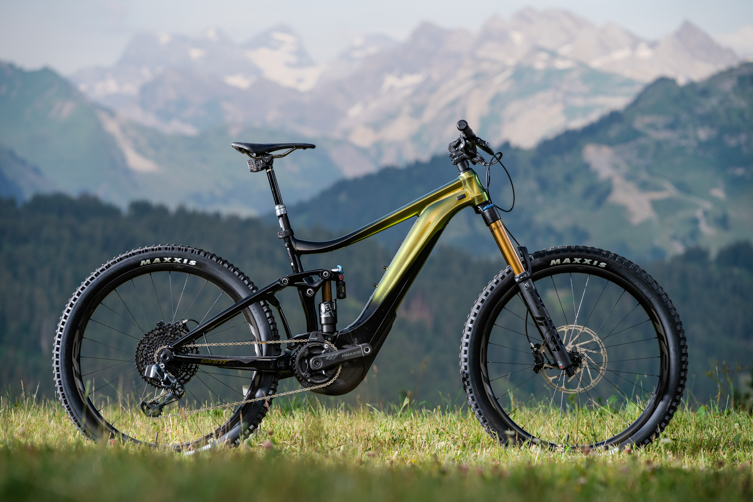
In recent years e-Mountain Bikes have been rapidly gaining interest and popularity out on the trails right across Australia. And for good reason: they’re bloody fun, and they enable people of all ‘ages and stages’ to ride in ways and places they would have never thought possible. So what are e-bikes and how do they work? Glad you asked … that’s why we’ve gone ahead and put together our definitive guide to e-Mountain Bikes.
We’re about to tell you everything you need to know about this new breed of pedal-assisted machines. We’ll dissolve some of the more common myths surrounding them and we’ll explore the riding experience that they offer and some of the technologies that you’ll find featured in these bikes. We’ll run you through the three big players in the electric motor game right now. And finally, we’ll take a look at our pick of the best trail e-Mountain Bikes on the market this summer.
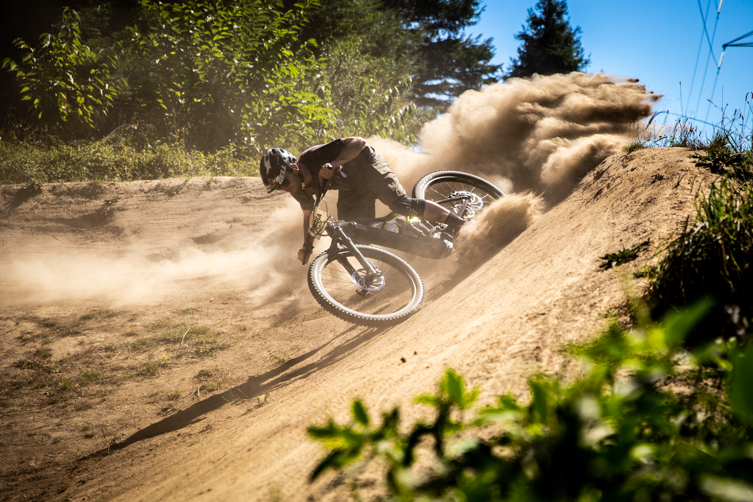
If you’ve ridden one, or you know someone that has, chances are you will already be convinced of their many positive factors and you’ll no doubt also be aware of how much bloody fun these bikes are to ride! Contrary to popular public belief when e-Mountain Bikes first arrived on the scene a few years ago, modern mountain bike (dual suspension and hardtail) e-Mountain Bikes are nothing like a motorbike. They don’t have a throttle, they can’t throw roost or do burnouts. An e-Mountain Bike is essentially a ‘normal’ mountain bike, but with the addition of a small contained electronic motor and a battery. The rider still has to pedal in order for the bike to go; the motor simply meets the rider’s level of power output up to a certain point. Thus their name, ‘pedal assist’.
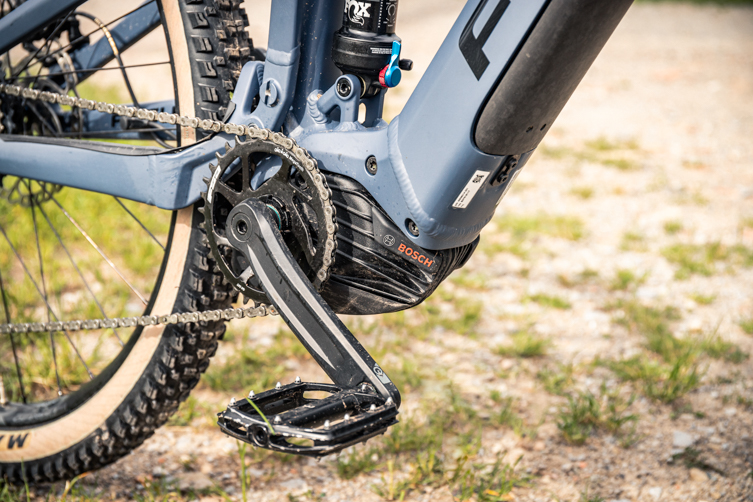
Okay, so why an e-Mountain Bike? Who are they for and what difference does the pedal-assist motor make? In a nutshell, the possibilities and potential of e-Mountain Bikes out on the trails is endless… Do you only have one hour to go riding and want to maximize the amount of trail you can ride? An e-Mountain Bike essentially allows you to grab twice the amount of corners, twice the amount jumps, double the amount of downhills and fun stuff, each and every time you go riding. Ever wondered what the trails are like over on the next ridgeline that you’ve never been able to get to before? Keen to explore further and adventure more singletrack? Come on, you know what we’re about to say, an e-Mountain Bike is going to allow you to do just that – cover more trail each ride. Recovering from an injury, or simply getting to that age and stage in life where your body isn’t able to perform as it once did? An e-Mountain Bike is going to give you the freedom to pedal along and up the trails without taxing your body half as much as a conventional mountain bike. Are you a trail builder or photographer who needs to cart a lot of gear around out on the trails? An e-Mountain Bike allows you to do just that – without destroying yourself in the first five minutes. Not as fit as you once were, but still love getting out on the trails? An e-Mountain Bike would be brilliant for you. Or if you don’t fit into any of these categories and you’re just your ‘average’ mountain biker, well then riding an e-Mountain Bike is going to give you a whole different feeling of fun than you’ve ever had out on the trails before. The list of positives goes on and on.
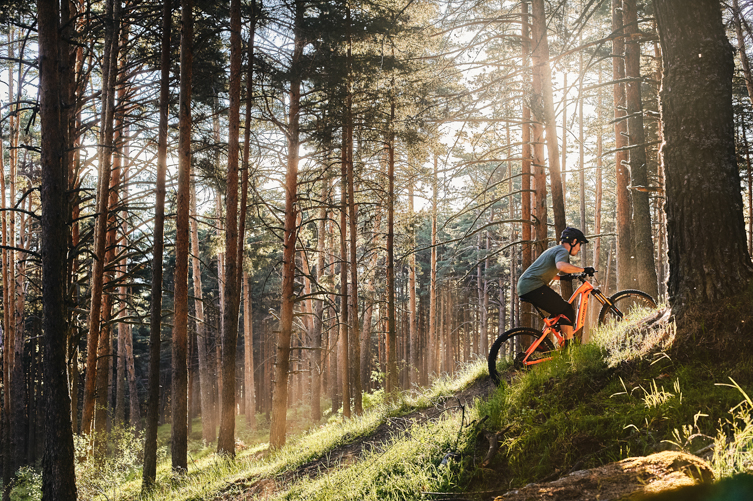
The ‘e’ in their name obviously stands for the electronic motor that is their central feature. The motor will only provide assistance to your riding when you are pedalling. Basically, when you put force through the pedals, it will assist you. No force to the pedals, no assistance. Be assured though, riding an e-Mountain Bike does not feel like you’re riding a scooter or a motorbike; it’s more like your ride comes with a difficulty meter that you can control at any time. By combining the choice of different power modes with the gear range in the rear, you can choose how far and how hard you want to ride. The majority of e-Mountain Bikes have power modes that range from zero assistance, to ‘holy crap that’s fast!’
The power modes of an e-Mountain Bike’s motor can be easily adjusted from zero to turbo with a shifter-style switch. The great thing about this set-up is that it feels very similar to a ‘3 by’ front chainset, providing the integrated ride feel that we’ve come to expect from our bikes. Once you turn one of these bikes downhill, they will still feel like a regular mountain bike. Even though the bikes are slightly heavier (3-5kg), the weight is low and situated around the bottom bracket, which results in awesome handling. E-Mountain bikes do lose a bit of the agility and ‘pop’ that some bikes have, but more than make up for it when they are plowing up hills with ease. You’ll also be surprised how much speed you’re able to hold on the flat parts of a trail with the assistance of the e-Mountain Bike motor.
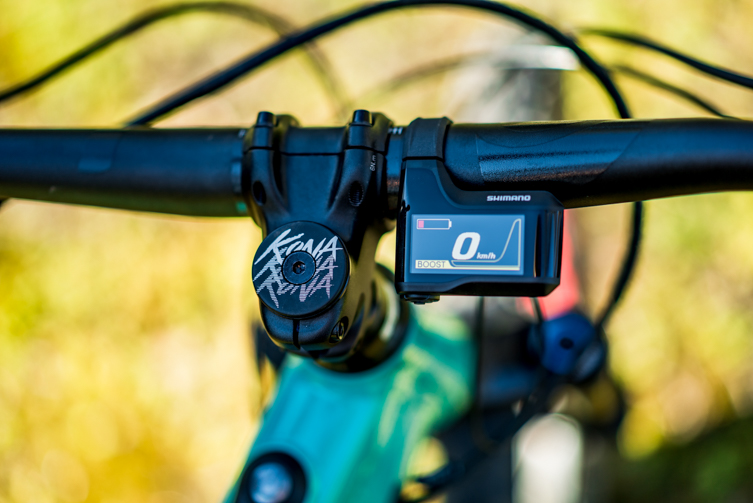
There are many different motors and drive options on the market today, each with varying levels of success. Currently, the two biggest players are provided by Shimano and Bosch, with brands like Specialized using parts from Brose. They all provide assistance through the cranks, and have batteries located on/in the down tube. The mid-drive motors are the most common, due to the fact you won’t need any specialty wheels, axles, or spokes to repair the bike, like in hub-driven situations. Mid-drive motors also provide that desirable low centre of gravity, with the bonus of a nice, sleek visual appeal.
Battery longevity and range is a common concern amongst riders considering an e-Mountain Bike purchase. It’s actually quite a similar situation to riding a standard bike. If you were to head out on a nice, cruisy, flat ride, then of course you could cover more distance than if you were tackling a technical steep climb. Just like the human body, the more work is done, the shorter the range. Most of the bikes will come with a display that provides a live range reading to indicate how long you have before the battery dies. A standard e-bike with a 400-500wh battery will offer 100-120km on eco or 35-50km on turbo in the hills.
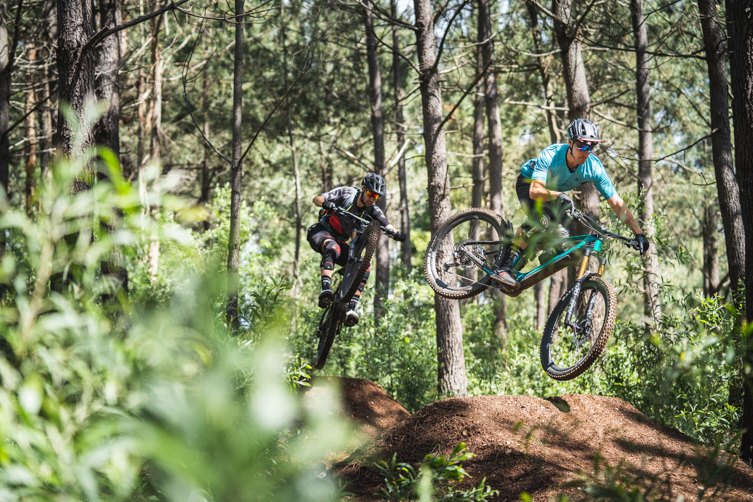
The practical application of electronic assistance in mountain biking is simple; when the hill gets steeper, you bump up the assistance to make climbing more pleasurable. Whilst the leg strain is lower, the heart rate will still be high and the training benefits will remain. E-Mountain Bikes are providing a way for current riders to explore further and train smarter. The e-Mountain Bike is a great addition to the mountain biking arsenal, and there’s no doubt the e-Mountain Bike market will only continue to grow. They’re like any other mountain bike, only they offer the option of assistance if you need it. While some fitter and accomplished riders may not see the point, these bikes are offering many more open doors to people struggling to enjoy mountain biking. Fathers and sons, husbands and wives, fit and unfit riders can now ride together and enjoy the trails. There is no downside to this because, as the sport expands, so will the trails, funding and general stoke on the sport.
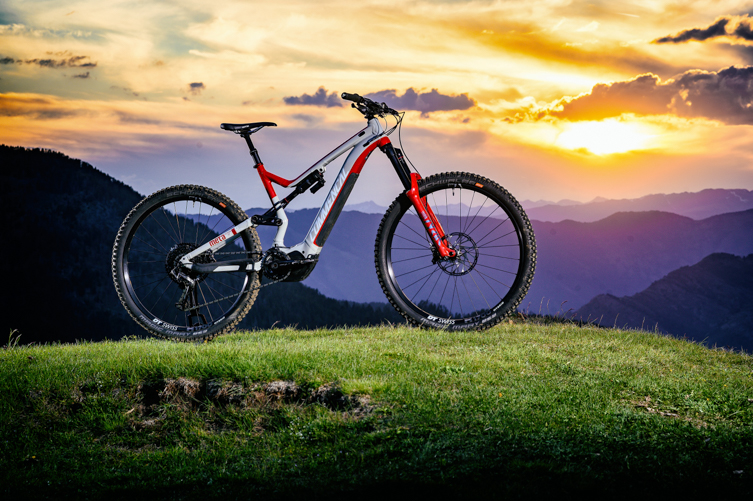
BUYERS’ GUIDE
When buying an e-Mountain Bike, most people just look at which make of motor it has and maybe what forks are bolted to the front-end. But the reality is, there is a lot more that you need to consider when choosing which e-bike is right for you. Frame design and geometry is absolutely fundamental and will play a much larger role in how an e-Mountain Bike bike handles and performs out on the trails than just the motor that it’s fitted with. Think of it this way: if you bolt a Ferrari engine into a Toyota HiAce, it’s going to drive like a nightmare, eh! The design of the bike’s rear suspension is also going to be a crucial factor in how the bike handles.
The way in which that motor and battery have been incorporated into the bike’s frame should also be considered. Some batteries are removable, others are built right into the bike’s downtube. Neither of these battery storage solutions are better or worse than the other. If the battery is built into the frame, it simply means you need to take your power source to the bike in order to recharge.
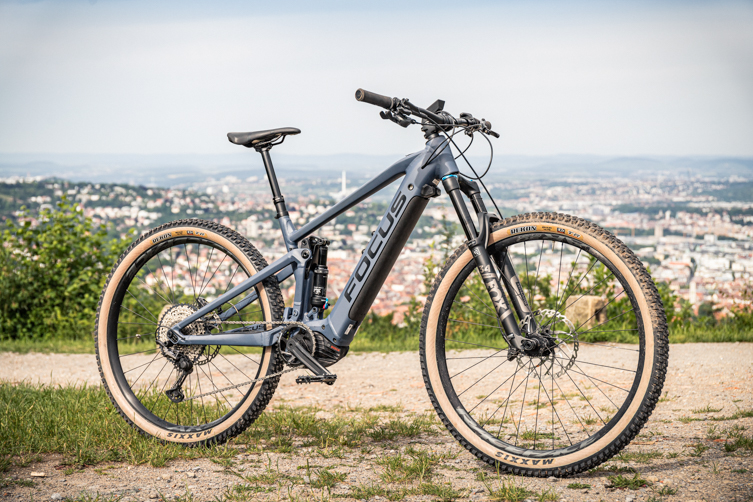
As e-bikes continue to gain popularity, more and more component brands are starting to develop products specifically for e-Mountain Bikes. Drivetrains, suspension, seats and various other components are now being designed specifically for e-Mountain Bikes. Whilst not solely for e-bikes, the new generation of super-wide rims and tyres (not to be confused with ‘fat bike’ wheels, which are a totally separate and stupid kettle of fish) are being embraced by e-Mountain Bike riders. The higher overall weight of an e-Mountain Bike means that they really benefit from the increase in traction and overall better handling that wide tyres/rims deliver.
And lastly on your shopping list of things to consider, do not forget about brakes. A much heavier bike, combined with higher average speeds out on the trails means that you’re going to be using and relying on your brakes a lot. A lot! You’ll be wanting as much power and consistency as possible.
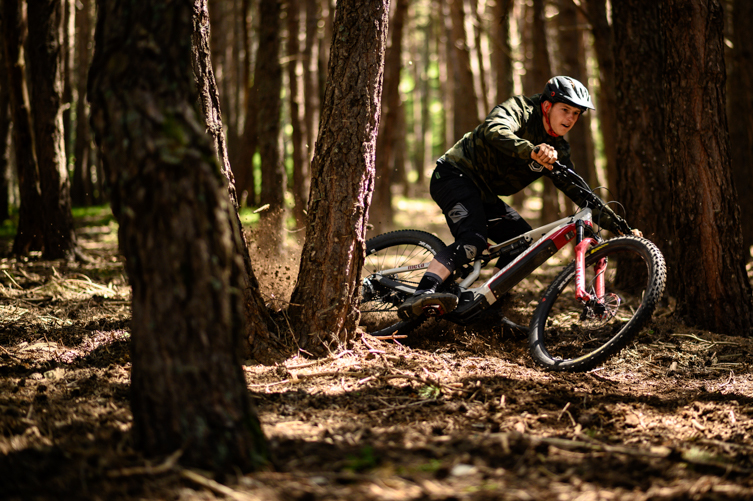
MOTOR TALK
As the popularity of e-bikes has exploded across the globe, practically every mountain bike manufacturer (as well as a heap of moto brands, as you might have noticed) have jumped on board and added e-bikes to their line-up. Interestingly, none of the frame manufacturers to date have developed their own motor systems. Instead, they’ve designed their frames around existing motor units, which are being offered by a handful of brands. We’ll go into a lot more detail discussing how the motors work in future articles, but for now here’s an overview of the differences between the three most common motors on the market right now.
Shimano ‘STEPS’
By far the most popular e-Mountain Bike motor on the market, Shimano, has really set the benchmark with their Steps E-8000 motor. Shimano steps is known for its smooth and intuitive support. The system will take into account the power you are putting into the pedals and match that. With four modes ranging from off (no assistance) to high (holy smokes I am Nino), you have the freedom to adapt the bike to the ride.
One of the biggest positives of the Shimano system is the Di2 shifter as a toggle switch for the drive modes because it provides the same sensation as using an old-school triple ring set-up. The bike’s onboard display is a high-definition unit that can be placed under the bar out of harm’s way. If XT Di2 is your thing, it can all be integrated into the same system controls.
Shimano also has an app known as E-Tube, which can be installed on any modern smartphone and will provide access to the bike’s onboard computer through Bluetooth connection. Any updates and customisations can be done straight from your phone. A recent update to the E-Tube app means it now includes the ability to control how strong certain modes are.
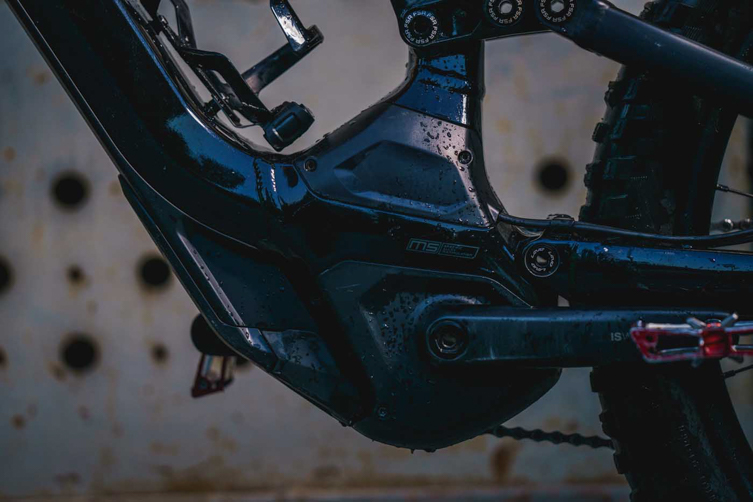
Specialized (Brose)
The Specialized ‘Levo’ is probably the most widely known (and much loved) e-Mountain Bike model to arrive in Australia to date. Specialized use a custom-designed Brose motor and battery set-up on both of their premium dual suspension ‘trail’ e-bike models; the Turbo Levo and Turbo Kenevo. These are without a doubt the cleanest looking set-ups on the market, they don’t look too different to their non-electric Stump Jumper and Enduro counterparts. Providing the most torque out of the three motors, you definitely feel the kick when you want to get going. The new 1.3 Brose motor also integrates the controls into the handlebars, bringing it right up into contention with the other two major brands
The engine runs cooler that the previous iterations and this translates to a more efficient motor. The real technology is in the battery and the mobile app that controls the unit. The app not only provides real-time data on the motor, but also allows you to custom-tune the power output and energy consumption.
With the most torque and as one of the most high-tech motors, it’s safe to say you will have a ball on any bike equipped with this bad boy!
Bosch Performance Line CX
The Bosch motors come with a kick comparable to an AMG Mercedes (she’s quick!). The Bosch motors will give you a swift kick in the rear whenever you want to go forward. This does have its downsides, with riders reporting the torque in the motor would create understeer resulting in riders overshooting corners while climbing if their body positioning wasn’t spot on.
However, after an update, the Bosch motor now has an E-MTB mode that will match the torque your legs provide and rectifies this issue. This also results in less changing of drive modes as the motor will intuitively provide up to 300% drive without the touch of a button, increasing the feel of an integrated ride. The new bar-mounted displays are now easier to see than previous models. Similar to Shimano Bosch, it also offers a shifter-style toggle switch.
The only negative to this motor is the lack of home connectivity. There is a proprietary connection needed to be able to update and adjust the system. Although this is a minor annoyance, you can have your local bike store update the system when necessary.
Wanna learn more?
You can keep up to date with everything there is to know about e-Mountain Bikes at revolutionmtb.com.au and their epic magazine, which features loads of interesting stories and interviews.
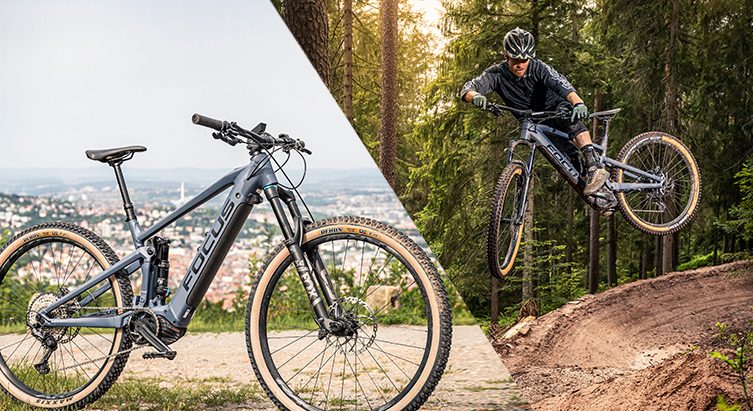
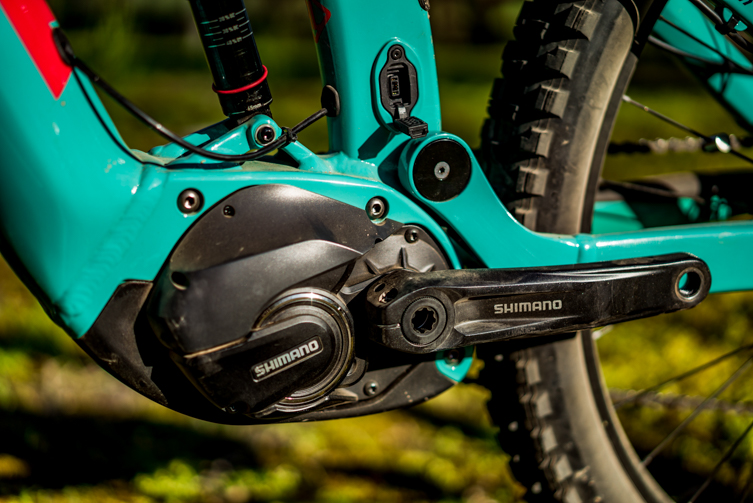
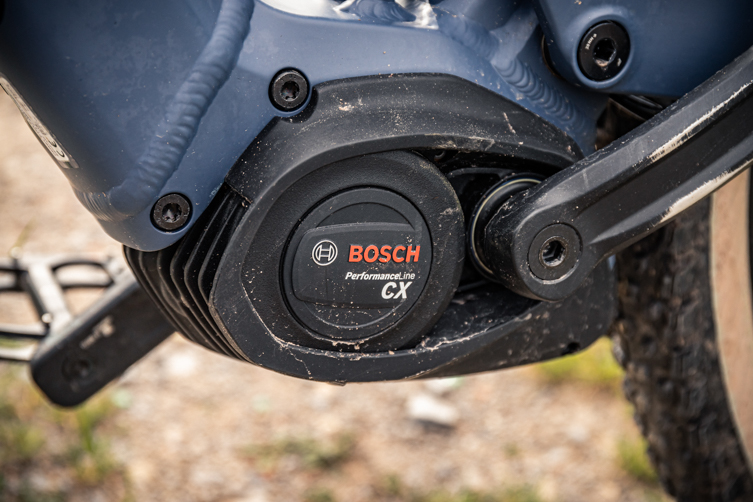
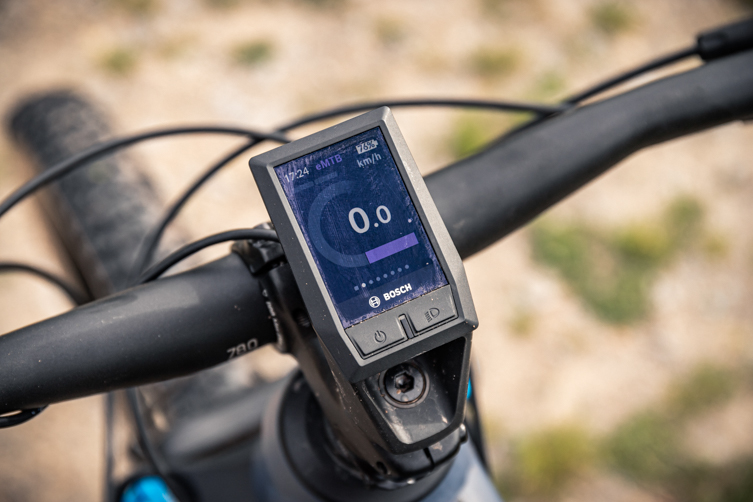
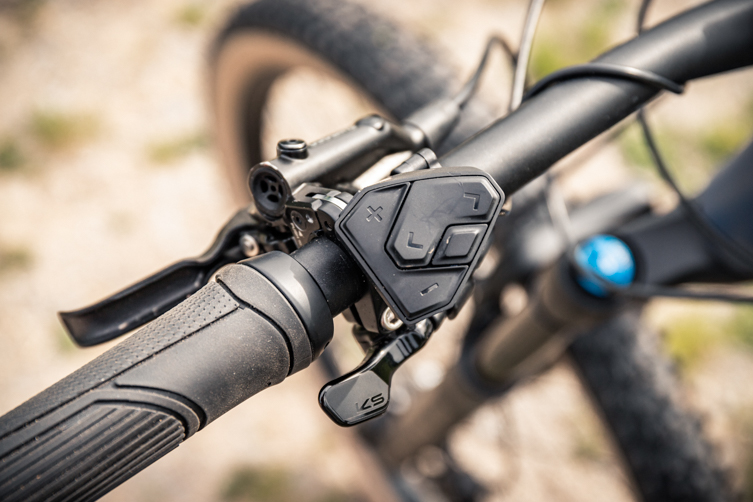









Be the first to comment...